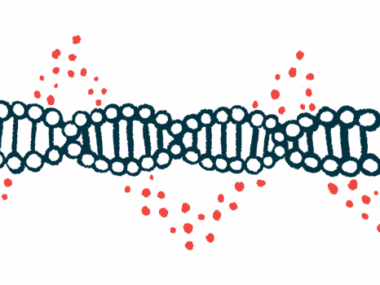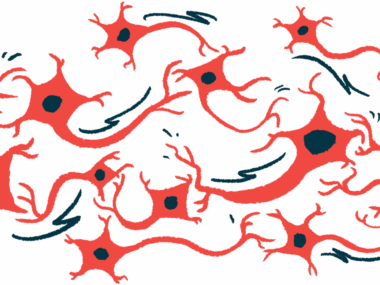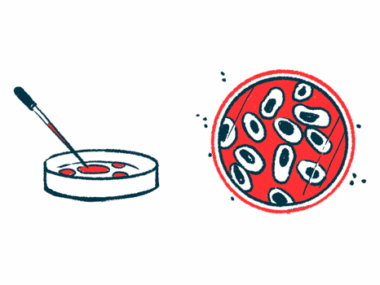New study links Rett energy problems to specific gene mutations
Ubiquinol boosted CoQ10 in Rett fibroblasts, but responses differed by mutation
Written by |

Fibroblasts from a Rett syndrome patient with a severe MECP2 mutation (T158M) showed markedly low levels of coenzyme Q10 (CoQ10), along with signs of mitochondrial redox imbalance and dysfunction, a lab study shows.
CoQ10 helps mitochondria — the cell’s energy-producing “powerhouses” — function properly.
Supplementing the fibroblasts with ubiquinol, a form of CoQ10, increased CoQ10 levels in all samples. But the study found the benefits varied by mutation, suggesting that the type of MECP2 mutation — the key driver of Rett — may influence how well a mitochondria-targeting strategy could work.
The study, “Mitochondrial redox imbalance and CoQ10 deficiency in Rett syndrome: Insights from patient-derived fibroblasts,” was published in Archives of Biochemistry and Biophysics.
How Rett syndrome affects cells and energy production
Rett syndrome, which mainly affects girls, is marked by early developmental regression, loss of motor and communication skills, and other symptoms such as seizures. MeCP2, the protein made by the MECP2 gene, helps regulate many other genes and plays a critical role in brain development and function.
Mitochondrial dysfunction and oxidative stress — when harmful reactive oxygen species (ROS) overwhelm the body’s antioxidant defenses — are thought to contribute to Rett syndrome.
CoQ10 plays a central role in mitochondrial energy production, helping transfer electrons needed to make ATP, the cell’s main energy source. In its reduced form, known as ubiquinol, CoQ10 also acts as a powerful antioxidant.
To better understand CoQ10’s role in Rett, a team led by researchers in Italy measured CoQ10 levels in fibroblasts — a common type of connective tissue cell — from three Rett patients with different MECP2 mutations. Fibroblasts from a healthy individual served as the control.
The patient with the T158M mutation — associated with a more severe Rett presentation — showed significantly lower CoQ10 levels compared with both the healthy control and the other two people with milder mutations.
“This suggests a potential association between the T158M mutation and CoQ10 deficiency,” the researchers wrote.
Testing whether ubiquinol could improve mitochondrial function
Next, the team tested whether ubiquinol supplementation could restore mitochondrial function and rebalance redox activity — the cell’s internal balance of oxidation and reduction. After 24 hours, CoQ10 levels increased across all three patient samples, with the largest rise from the patient with the severe T158M mutation, who had the lowest baseline CoQ10 levels.
Treatment significantly reduced ROS only in fibroblasts from the patient with a mild mutation, and showed a trend toward — but not a statistically significant — reduction in fibroblasts from the patient with the severe T158M mutation.
The researchers also analyzed the ability of mitochondria to split (fission) and combine (fusion), two key processes that help mitochondria stay healthy and functional.
Fibroblasts from the patient with a mild C-terminal MECP2 mutation showed the strongest imbalance between fission and fusion. After ubiquinol treatment, fibroblasts from the other two patients showed increases in the fission-to-fusion ratio, which the researchers said may reflect enhanced mitochondrial turnover (replacing old or damaged mitochondria with new ones) or mitophagy (degrading damaged or unnecessary mitochondria) as oxidative stress decreased. Cells with the C-terminal deletion did not change.
This result “underscores the importance of considering specific MECP2 mutations when evaluating potential therapeutic interventions targeting mitochondrial dysfunction,” the researchers wrote.
Looking at mitochondrial dynamics and antioxidant defenses
They also analyzed levels of paraoxonase-2 (PON2), an antioxidant enzyme in mitochondria that helps protect cells from oxidative damage. Fibroblasts with the C-terminal MeCP2 deletion showed a 21% reduction in PON2 activity compared with control cells. PON2 activity also fell by about 22% in fibroblasts from the patient with the severe T158M mutation.
“These findings suggest a mutation-specific dysregulation of PON2,” the investigators wrote, adding “our data suggest that CoQ10 supplementation could mitigate oxidative damage and preserve mitochondrial integrity.”
However, “we are far from being able to claim that it can [represent] an effective therapeutic strategy to complement current pharmacological treatments in RTT [Rett] patients,” they added. “Further research is warranted to explore the potential of CoQ10 as an adjunctive treatment, particularly during the early stages of RTT.”






